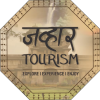Jawhar –A place with long history
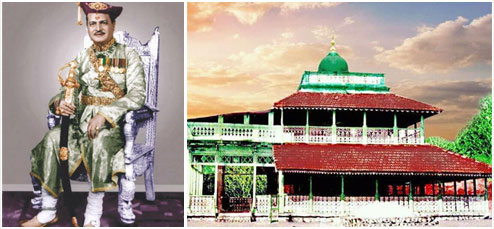
Jawhar in Maharashtra was princely state in India which becomes a part of Bombay presidency during the British raj….
The history of Jawhar takes back to early 1300 A.D. During the first Mughal invasion of the Deccan (1294).Jawhar was in the hands of Warli chieftain, History states that a koli named Jayaba, who had a small mud fort at Mukane once visited a shrine at pimpri. He was blessed and saluted as ruler of Jawhar. Jayaba there upon collected a body of kolis and marched northwards. He went to surat and as far as Kathiawar where he remained for seven years, On his return from Kathiawar he went to Jawhar and asked to Warli chief to give him as much land as he hide of a bullock couled cover. The Warli chief agreed, but when the hide was cut into fine shreds or strips, it enclosed the whole of the Warli chief possessions. Jayaba became the sole ruler of Jawhar and was known as H.H.Maharaj Jayabarao Mukne of the Mukne Dynasty.
On Jayabas death,Nemshah his elder son succeeded him as the chieftain. In the middle of the fourteenth century(1343),he was given the title of shah and recognized by the Delhi Emperor as chief of tract of land containing about twenty-four forts. So importance was the day in the history of Jawhar that 13th of June 1343, The day of which Nemshah received the title of shah from Delhi Emperor, Is considered the beginning of a new era. The first coronation ceremony of the Jawhar Gadi was held in 6th 1348. By the middle of sixteenth century Jawhar limits were constrained by the advance of the Portuguese after the down fall of Portuguese power the kolis regained their importance. At the close of the seventeenth century, with the help of the Mughals, the Jawhar chief marched over the north Kokan with 4000 soldiers. In the beginning of the eighteen century except the sea coast, the Jawhar rulers help the whole of the north kokan from the bassein to Daman as well as some districts as far south as Bhivandi.
In the eighteen century, the Jawhar chiefs have to face of more formidable foe.The rise of the Maratha put great part of the southern district of Jawhar in the Maratha’s hands. The Jawhar chief became dependent on the Marathas. The peshwa assumed the management of the state. In the 1782, an arrangement was made with the peshwas, under which the Jawhar chief was allowed to keep the territory. IN the 1798, on the death of Patamshah II, the peshwas allowed his son Vikramshah III to succeed, but made him agree to manage his affairs in accordance to the peshwas government.
In 1805, in consequences of Bhil outbreak near Ramnagar, the peshwas sent a force and ordered the Jawhar chief to place himself under the orders of his officers. When Vikramshah III died in 1821 and his son named Patangshah III was born sometime later, the management of the state was entrusted to Patangshah’s mother. In succession to Patangshah III who died without any heir, his widow adopted Narayanrao who was known as Vikramshah IV, who is turned who adopted Malharrao. During this time the state was attached, and the mamlatdar of Dahanu was placed in charge. The young chieftain was sent to the Pune high school and a officer was chosen to manage the state. The young chieftain was later installed as the ruler in Jawhar on the 28th march 1867. During this time, school were opened, important roads were made through the kasatvadi and Dheng passes, and well dugs and the water supply improved. The last princely ruler of Jawhar (Mukne dynasty) H.H.Shrimanta Raja Patangshah V (Yashvantaroa Mukne), was the 19th in succession. He was the first MP from Dahanu constituency at the time of first Lok Sabha after independence. His studied in Rajkumar college at Rajkot and later joined Royal Indian Air force to serve British Queen in II World war. He was awarded with Royal Crown and RIAF Medal.
Jawhar – Rooted in culture and tradition
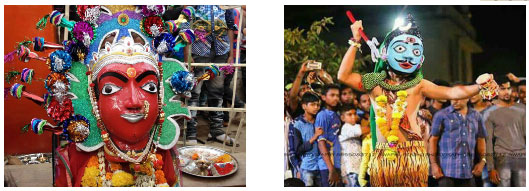
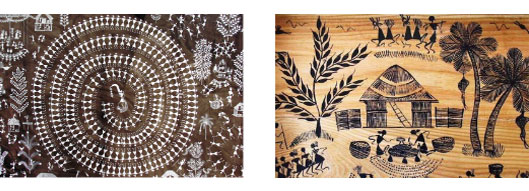
Jawhar, one of the few remaining tribal kingdoms in Maharashtra, is a veritable treasure house of tribal culture and heritage. Jawhar offers you the unique opportunity to expose and enlighten yourself with the tribal way of life which is distinct culture of its own consisting of curious rituals and colorful folklore.
The Warli tribes of Jawhar and their world famous Warli paintings are today an inherent part of Jawhar. The vibrant, ebullientWarli paintings are said to have originated in the 10th century AD.
These paintings depicting the diverse aspects of everyday life, foam an integral part of religious rituals and marriage ceremony. Triangular humans and animals with stick like hands and legs, geometrical design with rows of dots and dashes are drawn on the mud walls of the huts of tribal. These paintings depict wedding scenes, various animals, birds, trees, men, women, children’s, descriptive harvest scenes, group of men and women dancing around a person playing Tarpa, dancing peacock, etc.
Warli paintings are strangely ascetic, unlike other colorful folk painting of India. They are painted in white on an austere surface decorated with occasional dots in red and yellow. It is believed that these painting invoke power of the Gods.
Beside this the art of making paperMache masks and toys is an intrinsic part of the Jawhar culture.Another item which is native to Jawhar is the making of beautiful bouquets form dried natural plants and flowers.
Jawhar is home to beautiful dance forms
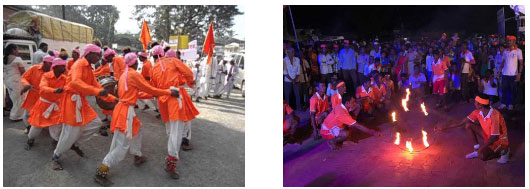
Marriages, festivals, harvest are all occasions for dances. The foot topping dances of Tarpa and the Dhol create a magical effect and the reflect the distinct identity of these simple folks. The accompanying musical instruments are innovated by the tribals themselves with locally available material.
The Tarpa dance is the most popular dance form of the Warli and Kolis and is performed in the celebration of the harvest in September up to the festival of Diwali, during the moonlit nights. The lead dancer of the group taps ground with an ornamented stick (Ghol Kanthi) in a rhythmic beat. The other holds each other around the waist and wind their way around the musician.
